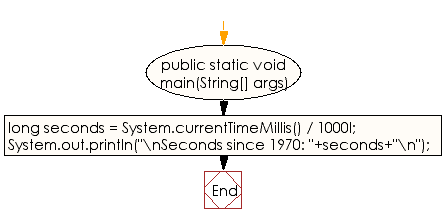Something that adapts to your use case.
Ruby time now in milliseconds.
Usr bin ruby w time1 time new puts current time.
Shakespeare datetime.
This is where datetime steps in.
2 1 0 001 require time true 2 1 0 002 time now utc iso8601 2015 11 12t04 46 43z the round method will get you finer resolution.
The unix epoch or unix time or posix time or unix timestamp is the number of seconds that have elapsed since january 1 1970 midnight utc gmt not counting leap seconds in iso 8601.
What is epoch time.
Mon jun 02 12 02 39 0700 2008 current time.
If you need anything else a scalar value e g.
Readable strftime a the abbreviated weekday name sun a the full weekday name sunday b the abbreviated month name jan b the full month name january c the preferred local date and time representation d day of the month 01 31 h hour of the day 24 hour clock 00 23 i hour of the day 12 hour clock 01 12.
Time1 inspect time now is a synonym.
This site provides the current time in milliseconds elapsed since the unix epoch jan 1 1970 as well as in other common formats including local utc time comparisons.
Time is an abstraction of dates and times.
This can be accurately represented with an object.
T time now t zone cet t utc offset 3600 1 you can also get the current time in utc.
The time class treats gmt greenwich mean time and utc coordinated universal time as equivalent gmt is the older way of referring to these baseline times but persists in the names of calls on posix systems.
You can use a method to get almost any format you need.
But that gets you this.
But you may want something else.
A point in time.
England tue 23 apr 1616 00 00 00 0000 cervantes datetime.
First make sure to require time in order to get iso8601 formatting.
Iso8601 1616 04 23.
Time is stored internally as the number of seconds with fraction since the epoch january 1 1970 00 00 utc also see the library module date.
So you want to generate iso8601 formatted timestamps in ruby but need resolution finer than a second.
Time time now getutc rationale.
Time2 time now puts current time.
Time2 inspect this will produce the following result current time.
Seconds since the unix epoch 100 ns intervals since 1601 or maybe a string for display purposes or storing the timestamp in a database you can readily get that from the object.
In my eyes a timestamp is exactly that.
Iso8601 1616 04 23 date.
1970 01 01t00 00 00z literally speaking the epoch is unix time 0 midnight 1 1 1970 but epoch is often used as a synonym for unix time.
Some systems store epoch dates as a signed 32.
Ruby formats time objects in a specific way by default.
Mon jun 02 12 02 39 0700 2008 getting components of a date time.

